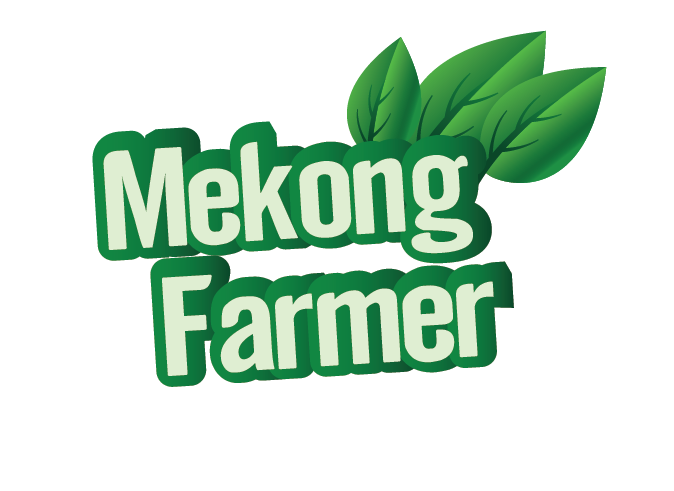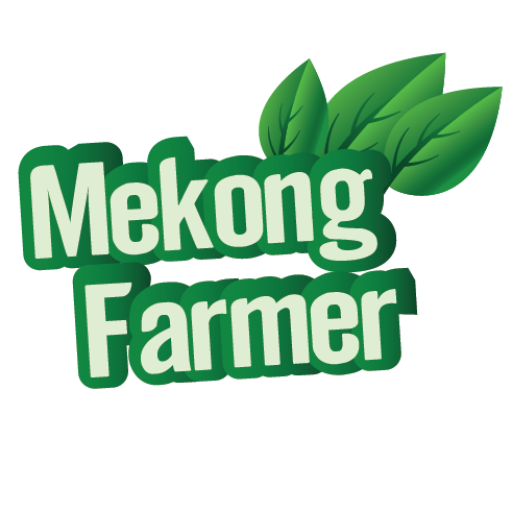(VAN) The National Authority for Agro-Forestry-Fishery Quality Processing and Market (NAFIQPM) provided updates on the essential regulations that seafood exporting enterprises must follow to meet European standards.

Ms. Nguyen Thi Hong Hoa from the National Authority for Agro-Forestry-Fishery Quality Processing and Market (NAFIQPM) outlined some new regulations for key seafood import markets. Photo: Nguyen Thuy.
Key seafood import markets require stringent control by the competent authority of the exporting country to ensure food safety. To comply with these requirements, the exporting country’s authorities must be assessed and recognized for their capabilities, and a list of qualified export processing facilities must be established. Each export shipment will be evaluated, sampled for testing, and issued an FHS (Food Health Safety) certificate.
Adhering to the EU’s rigorous food safety regulations for imported seafood poses a significant challenge. Vietnamese seafood shipments frequently face warnings from the EU’s regulatory authority regarding antibiotic residues. Furthermore, Vietnam has yet to resolve the “yellow card” issued under the Program to Combat Illegal, Unreported, and Unregulated (IUU) Fishing.
The EU’s accreditation requirements for facilities are stringent. Currently, only processing and cold storage facilities are included on the approved list. Additionally, the food safety conditions of these facilities often fall short of EU standards.
Moreover, strict requirements for imported products, including certificates and chain control, particularly the stipulation that tuna products in brine can only be used in the canning industry, add further complications for export enterprises.
Special requirements
The EU has acknowledged Vietnam’s seafood safety control system, with NAFIQPM serving as the competent authority for overseeing seafood exports to the EU. Establishments within the seafood export production and business chain must be inspected and recognized as meeting food safety conditions and EU regulations. These establishments must also be listed to export to the EU. Each shipment exported to the EU is assessed, sampled for testing, and granted a food safety certificate in accordance with Circular 48/2013/TT-BNNPTNT of the Ministry of Agriculture and Rural Development (amended and supplemented in Circular 32/2022/TT-BNNPTNT).

Each batch of seafood exported to the EU is assessed, sampled for testing and granted a food safety certificate. Photo: Quynh Chi.
Some specific requirements for exporting seafood to the EU market are:
- Aquaculture: Must develop, implement and be recognized by the EU as a national monitoring program for antibiotic residues in aquaculture.
- The bivalve mollusc monitoring program (locally known as NT2MV) entering the EU must be developed, implemented and recognized by the EU as safe for harvesting areas.
- Every year, the competent authority of the exporting country must report to the EU on the results of the implementation of the Monitoring Programme; periodically, the EU competent authority will visit to inspect the actual development and implementation of the Programme.
- The EU authority requires a separate list for establishments producing frog legs, snails, gelatine/collagen from aquatic raw materials.
- Require a list of all facilities participating in the chain: purchasing facilities, preliminary processing facilities, cold storage facilities, processing facilities, freezer ships, and processing ships.
- Regulations on combating IUU fishing.
- Regulations on general conditions to ensure food safety.
Regulations on general conditions to ensure food safety
Regulation (EC) No 178/2002 sets out the general principles and basic requirements of food law and the obligations of food businesses in the EU. It covers preventive measures, food safety principles, emergency measures, labeling requirements, transparency, recalls and traceability, as well as the responsibilities of food business operators (FBOs) and the Rapid Alert System for Food and Feed (RASFF).
The regulation emphasizes transparency, with public consultation on decisions related to food safety. Article 18 provides for traceability, requiring that each food product be traced back one step up and one step down the supply chain. If a problem is detected, the product must be recalled immediately. EU member states are responsible for enforcing the law and monitoring compliance with these requirements, ensuring that they are fully implemented.
Risk assessments in this regulation are based on available scientific evidence and must be conducted in an independent, objective and transparent manner.
Regulation (EC) No 852/2004 on food hygiene sets out requirements for equipment design, staff training, water quality, record keeping, pest control, use of chemicals, HACCP (Hazard Analysis and Critical Control Points), and waste management. It applies to all stages of the food and feed chain, from production to consumption.
Food business operators must comply with food hygiene obligations, including applying good hygiene practice guidelines and HACCP principles. Food businesses must also be registered and approved and comply with the import control regulations laid down in (EC) No 178/2002.

Food business operators must comply with food hygiene obligations, including applying good hygiene practice guidelines and HACCP principles. Illustration photo.
Regulation (EC) No 178/2002, also known as the EU General Food Law, sets out general principles and requirements for food safety, including prevention, emergency measures, labeling, transparency, recall and traceability, along with the responsibilities of food business operators (FBOs) and the RASFF rapid alert system. It establishes general principles and obligations for food businesses, and provides that the EU food safety authority will ensure transparency through public consultation.
One key requirement of the regulation is traceability, which requires establishments to be able to identify the origin of food products one step up and one step down the supply chain (Article 18). In the event of an incident, unsafe products must be recalled. EU member states will enforce the law and monitor and verify that these requirements are fully implemented.
Risk assessments are based on available scientific evidence and are conducted in an independent, objective, and transparent manner.
Regulation EC 852/2004 on food hygiene sets out requirements for equipment design, staff training, water quality, record keeping, pest control, use of chemicals, HACCP and waste management. It applies to all stages of the food and feed chain, emphasizing the food business operator’s obligation to ensure hygiene.
Food business operators must comply with good hygiene practice guidelines and HACCP principles. All establishments must be registered and approved. Import controls are carried out in accordance with EC Regulation 178/2002. This regulation also includes annexes with specific hygiene rules for production.
Regulation EC 853/2004 establishes specific hygiene rules for food of animal origin, including rules for fishery products. It defines “unprocessed” and “processed” products and requires establishment approval to ensure that only approved establishments are allowed to place products on the market.
Products must have an identification code and comply with special requirements on hygiene conditions, including live NT2MV products, aquatic products, frog and snail legs, collagen and gelatine, as specified in the annexes to the regulation.
These regulations help ensure that food products imported into the EU meet high standards of food safety and hygiene, protect consumer health and maintain product reputation in international markets.
Regulation EC 2073/2004 on microbiological criteria for foodstuffs and Regulation EC 1441/2007 amending Regulation EC 2073/2004 set out specific microbiological criteria that foodstuffs must comply with to ensure consumer safety.
Regulation (EC) 1881/2006 sets limits for contaminants such as heavy metals, dioxins, and others. Regulation EC 2021/1323 amends EC 1881/2006 regarding maximum levels of Cadmium in foodstuffs and EC 2022/617 amends EC 1881/2006 regarding maximum levels of mercury in fish. Accordingly, the mercury content in fish is between 0.3 and 1.0 mg/kg depending on the type of fish, and the mercury content in salt is 0.10 mg/kg.
Regulation (EC) 333/2007 specifies methods for sampling and analyzing process contaminants in food, in particular lead, cadmium, mercury, inorganic tin, 3-MCPD, and benzo(a)pyrene. Regulation (EU) 2017/644 specifies methods for sampling and analyzing dioxins and PCBs.
Regulation (EC) 470/2009 establishes maximum residue limits (MRLs) for veterinary medicinal products in food of animal origin, and Regulation EC 396/2005 establishes MRLs for pesticides. Regulation 37/2010 establishes lists of substances prohibited and permitted for use in food of animal origin.
Regulation EC 1333/2008 regulates the use of food additives and processing aids. It sets specific standards for food additives such as colorings, thickeners and flavorings.
Regulation EC 1169/2011 sets out the information on food labeling. The mandatory information that must be shown on the label includes the name of the product (including trade name and scientific name), list of ingredients, information on allergies and genetically modified foods, country of origin, net weight, expiry date, EU approval number, and batch identification.

The EU has innovated its state control system with the “Smarter Regulation for Safer Food and Plant Health” initiative to improve efficiency in food and plant health control. Illustration photo.
Some new EU regulations on seafood imports
The EU has innovated its regulatory system with the “Smarter rules for safer food and plant health” initiative to improve the efficiency and safety of food and plant health controls. Three foundational regulations have been issued, including the Regulatory Regulation OCR: (EU) 2017/625; the Animal Health Regulation AHR: (EU) 2016/429; and the Plant Health Regulation PHR: (EU) 2016/2031.
As of December 14, 2019, most of the provisions of the OCR and PHR have come into effect. As of April 21, 2021, the AHR officially comes into effect.
Regulation (EU) 2017/625 ensures the implementation of food and animal husbandry law, extends the scope, and harmonizes the rules for animal products, live animals, plants, and high-risk food of non-animal origin. It replaces Regulation 882/2004, Regulation 854/2004, and Directives 96/23/EC, 97/78/EC, and 91/496/EC. According to Article 127(3) of this regulation, establishments wishing to export to the EU must be listed.
The Information Management System for State Control (IMSOC) has been established to manage information related to state control.
Regulation (EU) 2019/625, as amended by Regulation 2022/2292, setting out the import conditions for consignments of products of animal origin such as fishery products, NT2MV and composite products, applicable from 21 April 2021.
Regulation (EU) 2019/627, amended by Regulation 2022/2503, sets out the implementation requirements for NT2MV controls (Articles 51-65) and fishery control measures (Articles 67-71).
In addition, the requirements for composite products are also specified in EC Regulations No. 2019/625 and 2020/692. Composite products are food products whose ingredients contain both products of plant origin and processed products of animal origin, as specified in Article 2 of EU Regulation 2019/625. The corresponding HS codes include: 1601, 1602, 1603, 1604, 1605, 1901, 1902, 1905, 2004, 2005, 2103, 2104, 2105, and 2106.
The classification of composite products based on public health and animal health risks, rather than on the percentage of ingredients of animal origin as previously, is provided for in Articles 162 and 163 of Regulation 2020/692. It includes three main categories:
- Non-shelf-stable composite products: Products stored/transported under temperature-controlled conditions, in accordance with Article 12 of Regulation 2019/625.
- Shelf-stable composite products containing meat in the ingredients: Products do not require temperature control during storage/transportation.
- Shelf-stable composite products do not contain meat in their ingredients.
Some of the conditions for exporting composite products are that the production facility must be on the EU-approved list. If the product contains meat, dairy products, eggs, or products derived from them, it must be produced in a country and facility that is approved for export by the EU (including residue programs, pest control, etc.) according to the list in Regulations 2021/405 and 2022/2293.
Composite shelf-stable products that do not contain processed meat must contain processed products of animal origin other than processed meat and be heat-treated according to EU regulation 2020/692.
The import control process involves a series of steps to ensure food safety and compliance with applicable regulations. First, the documentation accompanying the shipment is thoroughly checked. Next, identity checks are performed to ensure that the certificates or documents match the product. Finally, the product is physically inspected, which includes checking the packaging, temperature, sampling, and testing. Once all of these steps are completed, a conclusion on the inspection results is issued.
Agriculture News | Agri Products Price



